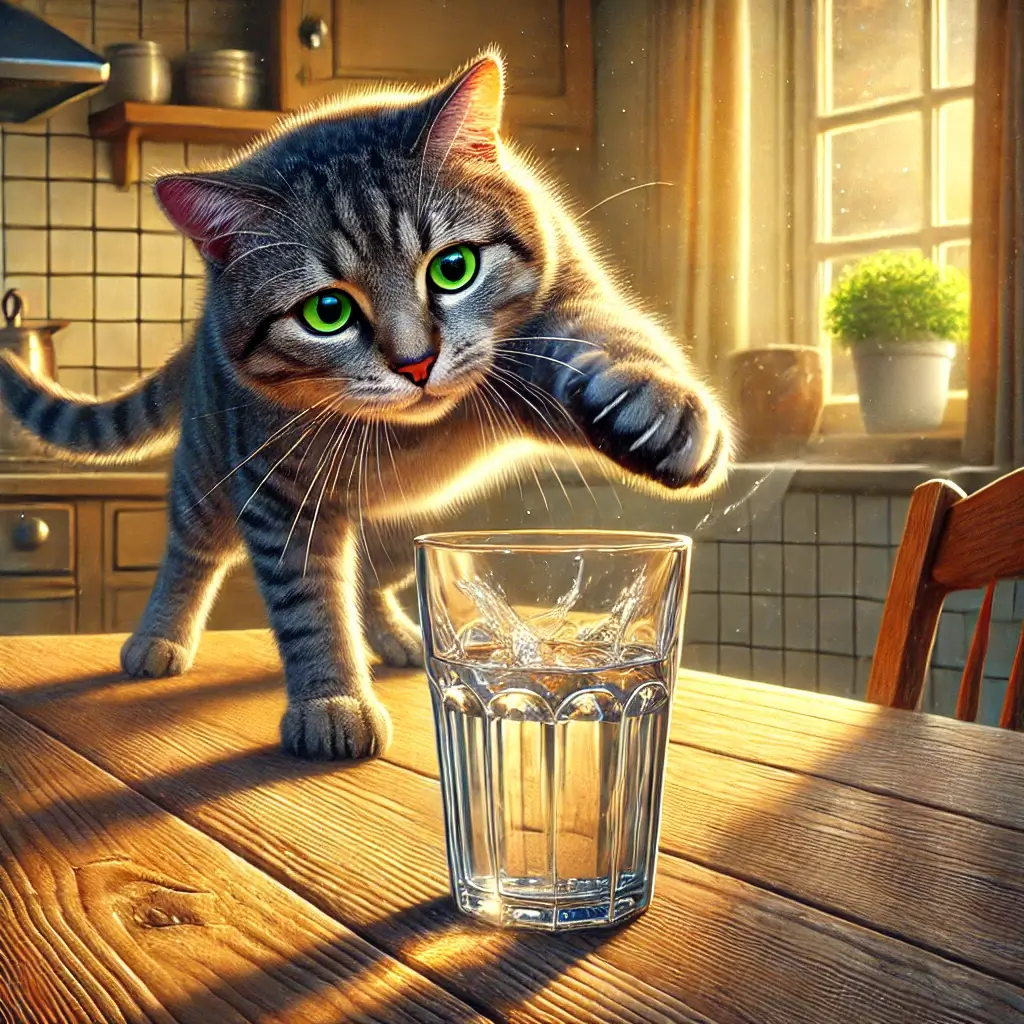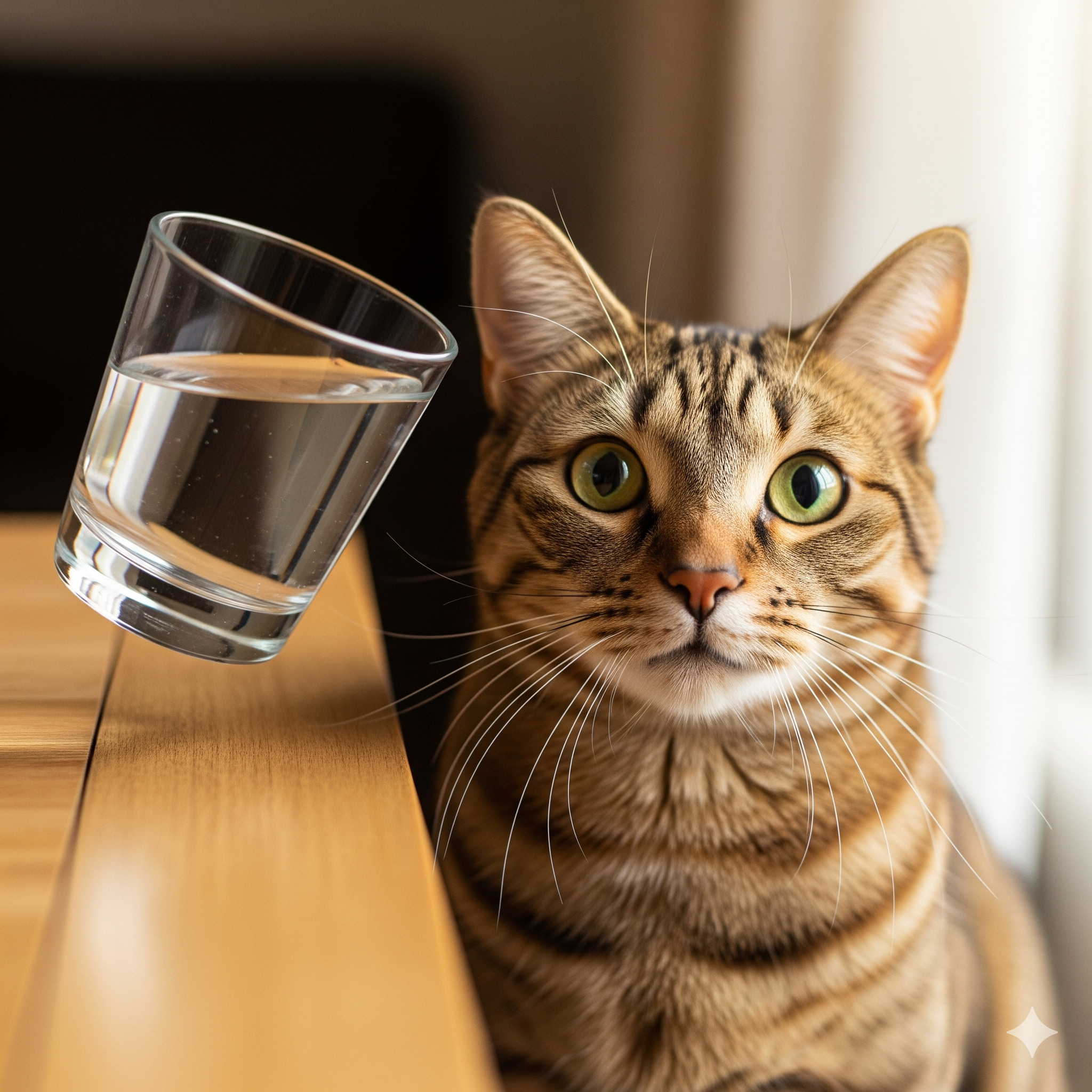Why Do Cats Knock Things Over? Decoding the Feline Fascination with Gravity
It’s a scene every cat owner knows by heart. You’re working, reading, or simply enjoying a quiet moment. Then, you hear it—the soft *tap, tap, tap* of a paw. You look up just in time to see your cat make direct, unwavering eye contact before deliberately nudging your favorite mug, a pen, or a set of keys off the edge of the table. It’s baffling, sometimes infuriating, but undeniably a core part of the feline experience.
This behavior, often misinterpreted as spite or naughtiness, is actually a complex cocktail of instinct, intelligence, and communication. A cat pushing an object off a ledge isn’t trying to annoy you (well, not *just* trying to annoy you). They are acting on deeply ingrained impulses that have made them one of the world’s most successful predators. Understanding the “why” behind this quirky habit can transform your frustration into fascination and deepen your bond with your furry agent of chaos.
In this definitive guide, we’ll explore the primary drivers behind your cat’s gravity experiments, from their hunter-gatherer instincts to their need for mental stimulation. We’ll also provide practical, humane solutions to help you manage this behavior and create a more harmonious home for both you and your cat.

Reason 1: The Apex Predator Within
At the heart of almost every “weird” cat behavior is a single, powerful truth: your fluffy housecat is a finely tuned predator. Domestication has changed their environment, but it has barely touched the ancient instincts that govern their actions. Knocking things over is a direct manifestation of this predatory drive.
The “Is It Alive?” Paw Test
A cat’s paws are not just for walking; they are sophisticated sensory tools packed with nerve receptors. When a cat encounters a new or interesting object, its first instinct is to investigate it with a paw. A gentle tap serves several purposes:
- It checks for a reaction. In the wild, a small, still object could be a hiding mouse or bug. A light touch is a safe way to see if it moves or reacts. When your pen skitters across the table, it mimics the movement of prey, activating your cat’s hunting sequence.
- It’s an information-gathering tool. The tap tells them about the object’s texture, weight, and potential as a “toy.” Is it fun to play with? Does it make an interesting sound when it falls?
This “paw test” is a low-risk way to assess a situation. If the object were a dangerous snake, a quick tap is much safer than a full-on bite. For your housecat, this instinct remains, even if the “prey” is just a bottle cap.
Predatory Sequence Activated
Pushing an object and watching it move and fall triggers the “search, stalk, capture” part of a cat’s predatory brain. It’s a satisfying simulation of a successful hunt.
Reason 2: “I’m Bored and You Are My Servant”
Cats are incredibly intelligent creatures, and one thing they learn with lightning speed is cause and effect, especially when it involves their humans. This is where the attention-seeking component comes into play.
A Proven Method for Getting Attention
Think about what happens when your cat knocks something over. You likely react immediately. You might gasp, say their name, rush over to pick it up, or even scold them. To your cat, all of these reactions read as one thing: **attention**. They have successfully summoned the giant, food-providing creature that was ignoring them.
Even negative attention is still attention. If your cat feels under-stimulated, lonely, or just wants to play, they will remember what worked last time. The direct eye contact they make right before the push is a part of this. It’s not a sign of malice; it’s a confirmation that they have your focus. They are ensuring their audience is present before the performance begins.
This is especially common in the morning when they want breakfast, or in the evening when you’ve been focused on a screen for too long. It’s their not-so-subtle way of saying, “Hey! Remember me? The small god who lives in your house? My food bowl is empty and I require stimulation.”

Reason 3: A Natural-Born Scientist Exploring the World
Beyond instinct and a desire for attention, cats are also driven by a powerful sense of curiosity. They are constantly exploring their environment and learning the rules of their world through experimentation. Pushing things off surfaces is, in a way, a scientific inquiry.
Learning About Gravity and Sound
Every time a cat pushes an object, they are gathering data. What kind of sound does it make? How does it fall? Does this heavy object fall faster than that light one? While they aren’t formulating physics equations, they are building a complex mental map of their physical environment. This exploration is a crucial part of their mental enrichment.
This behavior helps them understand their surroundings, which is vital for an animal that relies on three-dimensional space for safety and hunting. They need to know what is stable and what is not, and what happens when things move and fall.
How to Manage Your Little Gravity Tester: A Humane Guide
While understanding the behavior is the first step, you probably still want to keep your valuables safe. Punishing a cat for this behavior is ineffective and harmful, as they are acting on instinct and won’t understand the reason for the punishment. Instead, the solution lies in managing their environment and redirecting their energy.
1. Schedule Dedicated, Interactive Playtime
The single most effective tool is to tire them out. A bored cat is a destructive cat. Schedule at least two 15-minute play sessions per day using interactive toys like wand feeders or laser pointers (always end a laser session by landing it on a physical toy they can “kill”). This satisfies their predatory drive in a positive way.
2. Enrich Their Vertical and Horizontal Space
A rich environment prevents boredom. Consider:
- Cat Trees and Shelves: These give them a high vantage point to survey their territory and an appropriate place to climb.
- Window Perches: A “cat TV” with a view of birds and squirrels can provide hours of stimulation.
- Puzzle Feeders: Making your cat “work” for their food engages their brain and satisfies their foraging instincts.
3. Create a Safe and Stimulating Sensory World
Enrichment is also about engaging all their senses safely. You can use cat-safe plants like catnip or silver vine, or leave out boxes and paper bags for exploration. However, it’s crucial to ensure their sensory world is non-toxic. Many common household items can be surprisingly harmful to a cat’s sensitive system. Before you introduce new scents to “enrich” the air, for example, it’s vital to know if something like an air freshener is bad for cats, as many contain compounds that are dangerous for them to inhale. Prioritize their health above all else.
4. “Cat-Proof” Your Surfaces
For truly precious items, management is key. Use museum putty or double-sided tape to secure fragile objects on shelves. Keep counters clear of tempting, small items. Sometimes, the easiest solution is to simply remove the temptation.
As an Amazon Associate, we earn from qualifying purchases. The products below are curated by our team of cat lovers to help you build a fun and engaging environment for your feline friend.
Top-Rated Products to Keep Your Cat Engaged
Investing in the right tools can make a world of difference in your cat’s behavior. Here are a few highly-rated products on Amazon designed to combat boredom and satisfy instinct.

PetSafe Bolt Interactive Laser Cat Toy
This hands-free laser toy provides hours of fun. It generates random laser patterns that appeal to your cat’s hunting instincts, and an automatic timer prevents over-stimulation. It’s perfect for keeping them occupied when you’re busy.
Check Price on Amazon
Catit Senses 2.0 Food Tree & Puzzle Feeder
Turn mealtime into a stimulating challenge. This food tree makes your cat “hunt” for their kibble by pawing it through various levels. It slows down eating, prevents boredom, and satisfies their natural desire to work for food.
Check Price on Amazon
FEANDREA Multi-Level Cat Tree with Condo
A good cat tree is a game-changer. This model provides vertical space for climbing, cozy spots for hiding, and sisal-wrapped posts for scratching. It’s an all-in-one enrichment center that gives your cat an appropriate outlet for their energy.
Check Price on AmazonFrequently Asked Questions About This Feline Habit
Do cats knock things over to be spiteful or mean?
No. While it may feel personal, cats don’t act out of complex human emotions like spite. The behavior is driven by instinct, boredom, or learned attention-seeking, not a desire for revenge. Attributing human emotions to them (anthropomorphism) can prevent us from addressing the real, underlying cause.
Why does my cat stare at me right before pushing something off a table?
This is a learned behavior. Your cat has associated the act of pushing something with getting a reaction from you. The stare is their way of making sure they have your attention before they perform the action that they know will make you engage with them.
Should I punish my cat for knocking things over?
Absolutely not. Punishment, such as scolding or using a spray bottle, is ineffective and can damage your bond. Your cat won’t connect the punishment to the action, only to your presence, which can lead to fear and anxiety. Positive reinforcement and redirection are far more effective training methods for cats.
Does this behavior change as a cat gets older?
Often, yes. This behavior is most common in kittens and young adult cats who have higher energy levels and a stronger drive to play and explore. Senior cats tend to be calmer and may be less inclined to test gravity, though some will retain the habit as a proven way to get attention.
Conclusion: A Window into the Feline Soul
The act of a cat knocking something off a table is far more than a simple act of mischief. It’s a glimpse into their very nature—the intelligent hunter, the curious scientist, and the clever companion who has figured out exactly how to push our buttons (and our belongings).
By choosing to see this behavior through the lens of understanding rather than annoyance, we can better meet their needs. More playtime, a richer environment, and a little bit of patience are all that’s required to turn this frustrating habit into a manageable, and even endearing, quirk. After all, life with a cat is never boring, and that’s precisely why we love them.

